Last week I concluded my blog with the following ambitious statement:
“Some of the best professional development comes from in-school sharing and collaboration. That’s where I see myself teaching in the read/write web – to break out of the “echo chamber” that is web 2.0 and to bridge the chasm between what some may see as fantasy to reality.”
Today I attempt to answer the question “Where do I begin to bridge the chasm?
The biggest challenge to introducing the power of Web 2.0 tools into every classroom is the time it takes to learn. In Anne Davies blog “Thinking about change – Nov. 7, 2008 , Anne eloquently states:
I think a big part of why educators are not out of their own networks is that their day is filled with other priorities that the teacher has to accomplish. I wish schools would make reflection and learning time for teachers a priority that nothing could interrupt. Students need the same. I agree that educators need to blog, use wikis, del.icio.ous and the like but until the educators’ learning and growth is truly made a priority within our schools, I don’t think we will make the progress we need to achieve. We need leaders that make this happen. A reflective culture of learning and growing must be nurtured in our schools.
As Bridget McCrea reports in The Journal – Karl Fisch: Creating Lifelong Learners, Karl Fisch of Arapahoe High School, frustrated with the pace of technology integration into classroom practice, secured grant funding to provide significant release time for teachers to learn and apply the latest technology tools.
This is a professional development (PD) model in which I would love to participate. When the time is right, I will definitely be there to collaborate with teachers to delve deeply into the power of blogging and the interrelated world of Web 2.0 for education. But that will take time to work with school leadership and setting up as a possible school priority and I want to start right now. Again I ask myself, “Where do I begin?”
 Click Here To Learn Which Web 2.0 Tool I’ll Begin With and Why
Click Here To Learn Which Web 2.0 Tool I’ll Begin With and Why
(The background music is called “Outdoor Ambience” and was downloaded from Soundzabound Royalty Free Music for Schools and the “ptwiiing” effect is available as a freeware download courtesy of Chris from Flashkit.com.)
Why Podcast?
Wesley Fryer makes outlines a rationale for podcasting in education in his “Why Podcast?” ppt linked below
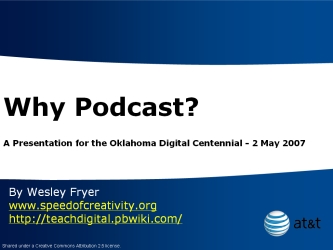 :
:
Check out a fuller description here .
In Manitoba podcasting is one of the suggested ways for students to “Show Understanding” of their Literacy with ICT Inquiry Projects as seen in this Developmental Continuum:
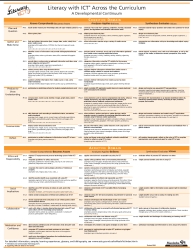 .
.
What is Educational Podcasting?
Here’s Tony Vincent’s comprehensive site for Finding and Subscribing to Podcasts.
One of the sites on Tony’s list: The Education Podcast Network (EPN) “is an effort to bring together into one place, the wide range of podcast programming that may be helpful to teachers looking for content to teach with and about, and to explore issues of teaching and learning in the 21st century.”
My advice would be to find and sample the podcast series you’d like to follow in EPN, then subscribe in iTunes. This list is great to illustrate the abundance and wide range of educational podcasts available, even though it is incomplete. The podcast series that is noticeable absent from this list is the cutting edge k12online08 Audio Channel , so that would be a good one to demonstrate subscribing to through iTunes. EdTechTalk is listed, but the full breadth of the podcast would be worthy of demonstrating as well, in particular the Women of the Web 2.0 podcast series.
How to Podcast?
Wes Fryer includes an extensive list of resources for getting started with educational podcasting on his Podcasting Wiki here.
One of the resources listed on this wiki is Tony Vincent’s Excellent Podcasting for Teachers & Students Click on the image below to view the full .pdf file.
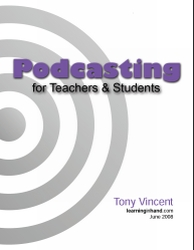
I followed Tony’s guide to create my own first podcast, from installing and using Audacity and Levelator Software to labelling and importing my podcast into iTunes complete with original artwork. This guide even details how schools can create and promote their own podcast series.
An important part of planning to podcast with students is exploring, then discussing what makes a good podcast. Here are 3 possible assessment rubrics to help guide students in their learning linked below:
Educators will also want to familiarize themselves with the Podcasting Legal Guide for Canada (also linked to the image below):
“Why Copyright?”, due November 2008, is another resource educators will want to watch for:
Why Copyright? Canadian Voices on Copyright Law – Trailer
When Do I Find Time with My Colleagues?
If time is such an issue in introducing Web 2.0 tools to teachers, when will I introduce podcasting? I’m happy to report that I’ve already started! Students in a grade 12 Psychology class asked their teacher to help them edit a .mp3 file that they wanted to include in their multi-media presentation to demonstrate their understanding and learning of their inquiry project “Effects of the Menstrual Cycle on Women’s Mental and Emotional Health”. I was invited into the classroom and arrived in a flash! I demonstrated how to edit .mp3 files using Audacity, then how to search for more podcasts on their topic through iTunes (yes there were more podcasts on this topic), add their own dialog to the podcast and generally hooked a whole group of students, plus their teacher, on podcasting. This is what I meant when I wrote “Some of the best professional development comes from in-school sharing and collaboration. That’s where I see myself teaching in the read/write web”. – in authentic learning situations. I’m just waiting now for the interest and enthusiasm for podcasting to “catch on” in other classrooms.
A teacher of beginning English as Additional Language students asked for a demonstration of how to locate on the web and burn podcasts to a CD for her to play in the classroom. We set up a time to do this and after that I asked “Would you like to learn how to make your own podcast?” hoping that she would jump at the chance – and she did! She was surprised at how easy it was and that I would post the files on the school blog for her students so they could practice speaking English outside of the classroom in the comfort of their homes or at a library – at absolutely no cost to the school!
A few weeks ago I posted a podcasting test on the division-sponsored blog entitled How I Made This Podcast. The reason I did that was to demonstrate that podcasts can be uploaded and embedded directly into my school division WordPress.org blogs, but need to be linked from a podcast hosting service into this WordPress.com blog. Well, it turned out that my podcast was a “hit around the office” with the division’s Educational Technology Folks. After I expressed my initial embarrassment at this, I was asked to share what I’ve learned about podcasting with the Senior Years Educational Technology Mentor’s Group. This is my plan:
December session:
- record the entire session using the podcast kit prepared by the ed. tech. folks and available for loan to schools
- edit and share bits of the session as “minutes” on the 9-12 Mentor’s blog (giving my word processor a break for a change!)
January Session:
- familiarize participants with the resources listed above
- demonstrate and walk participants through making and posting a podcast on our mentor’s blog
I’ll also highlight this CBC podcast featuring Darren Kuropatwa following his Web 2.0 PD session at our Manitoba Special Area Groups Conference on Nov. 28, 2008.
The time is right for the “just in time learning” of podcasting in my little educational enclave and fortunately I’m ready!
Which Web 2.0 tool would you begin with?
 Listen to this blog courtesy of Talkr.com
Listen to this blog courtesy of Talkr.com
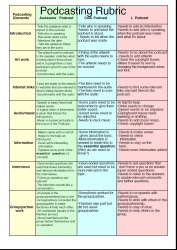
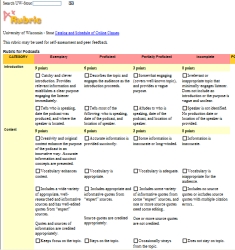
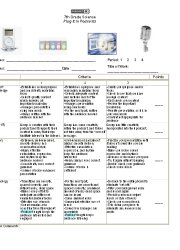
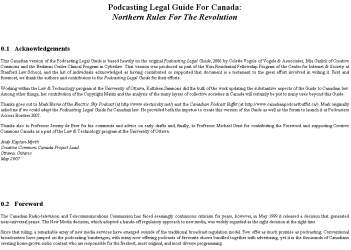



 Posted by lifelonglearnerrhonda
Posted by lifelonglearnerrhonda 
